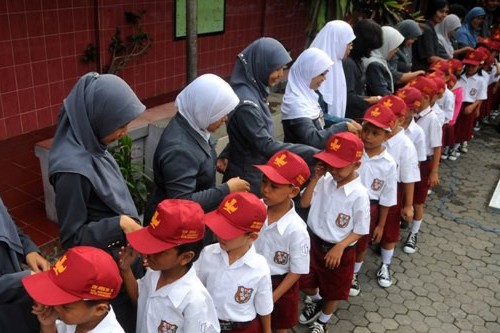

'More Advanced Low Education') - Middle School


'Dutch-Chinese School') - Primary School for Chinese HCS ( Dutch: Hollandsch-Chinescheschool lit.'Dutch-Native School') - Primary School for Natives HIS ( Dutch: Hollandsch-Inlandscheschool lit.HSS ( Dutch: Hollandsch-Schakelschool lit.'European Low School') - Primary School for Europeans ELS ( Dutch: Europeesche Lagereschool lit.The schools were arranged in the following levels: The elite native/Chinese population who lack Dutch language skills could enroll in either Dutch Native or Chinese schools. Dutch language was also needed for higher education enrollment. The schools for the European were modeled after the education system in Netherlands itself and required proficiency in Dutch. The Dutch introduced a system of formal education for the local population of Indonesia, although this was restricted to certain privileged children. However, spending sharply declined after the economic depression in 1930. The number of government and private primary schools for natives had increased to 3,108 and the libraries to 3,000 by 1930.

Funding for education only counted for 6% of the total expenditure of the colonial budget in the 1920s. Most often, however, the education development were starved of funding, because many Dutch politicians feared expanding education would eventually lead to anti-colonial sentiment. 300,000 guilders in 1864 to roughly 3 million guilders by the early 1890s. The budget for public schooling was raised in steps from ca. In 1871 the Dutch parliament adopted a new education law that sought to uniform the highly scattered and diversified indigenous education systems across the archipelago, and expand the number of teacher training schools under the supervision of the colonial administration. folk school), the embryo of what is called Sekolah Dasar (lit. In 1870, with the growth of Dutch Ethical Policy formulated by Conrad Theodor van Deventer, some of these Dutch-founded schools opened the doors for pribumi (lit.


 0 kommentar(er)
0 kommentar(er)
